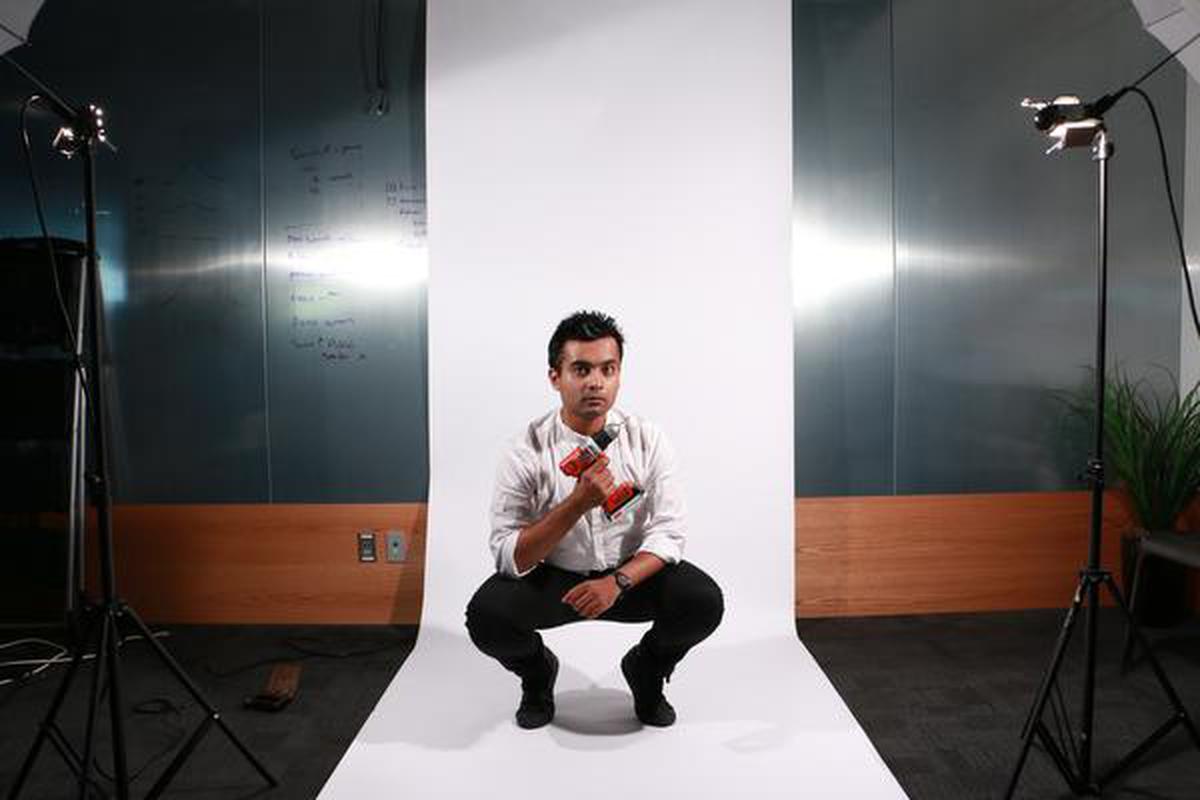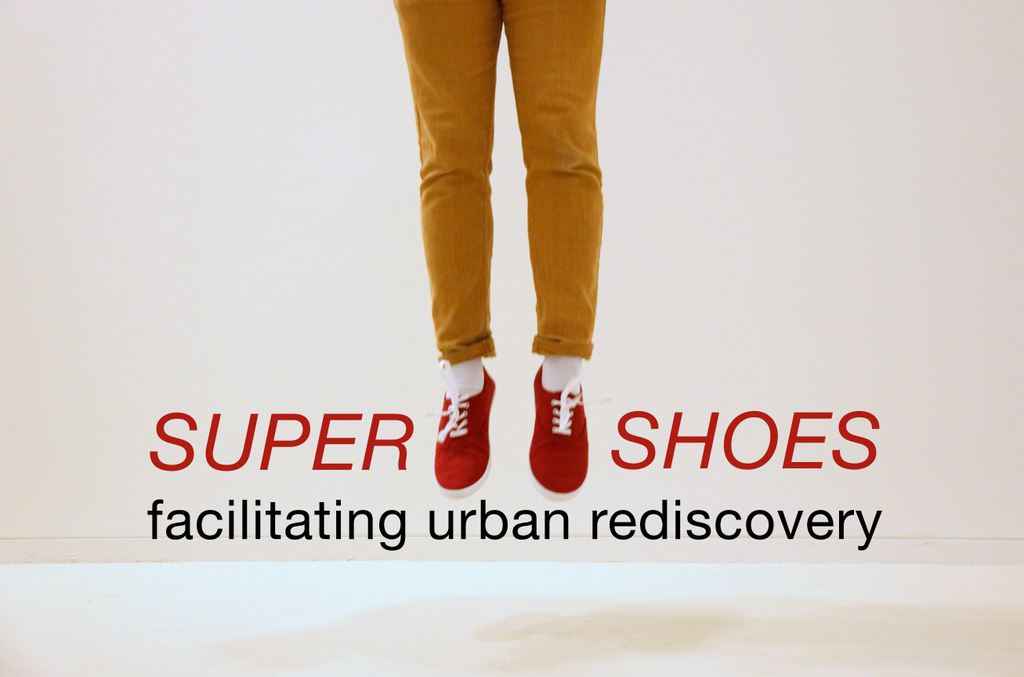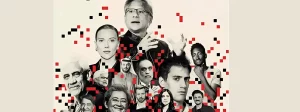(February 27, 2025) Imagine a world where your shoes don’t just protect your feet but also guide you, gently nudging you in the right direction, tickling your toes to tell you where to turn. Dhairya Dand, an acclaimed New York-based innovator and one of Forbes 30 Under 30 in 2014 and 2015, has built his career on reimagining the relationship between humans and technology. His SuperShoes were born from this very idea—a pair of insoles designed to guide people through cities without the distraction of looking at a smartphone. Embedded with sensors, these insoles communicate through subtle vibrations: a tickle on the left toe means turn left, on the right means turn right. The experience is both intuitive and immersive, a reminder that technology, at its best, should work with human senses rather than override them.

Dhairya Dand
For Dhairya, this was not just another invention; it was a culmination of everything that shaped him—his childhood in Nashik, his insatiable curiosity, and his refusal to accept the world as it is. SuperShoes was his way of rethinking the interaction between humans and machines, a question that has guided his entire career. In 2013, he was named one of the Boston Globe’s Top 25 Innovators, further solidifying his place as a visionary who blends creativity with technology to reshape the way we interact with the world.
A Childhood of Curiosity
Dhairya was raised on the outskirts of Nashik, India, in a household that was as much a workshop as it was a home. His father, a plumber and carpenter, built their house with his own hands, and his mother, a storyteller, filled it with imagination. Back then, he was supposed to follow in the footsteps of his father and learned plumbing, carpentry, and masonry before he even knew what engineering was. But what set him apart was how he blended stories with mechanics. “My mother would tell me stories, which fed my imagination. The stories, combined with my dad’s hands-on approach added to my personality — the hand played with mechanical objects even as the mind created stories about it in an imaginary world,” the Global Indian said.
School, however, was another story. “I was a bad student. I barely passed. I could never pay attention in class and hated structured learning,” he admits. But when he saw his first computer at age 14, it was like discovering magic. “This was a medium, a tool, that I could program with my intentions and it would follow.” It was the beginning of an obsession, which led him to engineering at Veermata Jijabai Technological Institute (VJTI) in 2005 against the wishes of his parents. ” I like to observe, question, self-reflect and find new knowledge, which turns into hard-earned wisdom – which then never leaves you. Engineering seemed to be one science that shared my ideals.”

Crossing the Threshold: Leaving Nashik for the Unknown
However, at VJTI, Dhairya found himself uninspired by the conventional curriculum. He preferred to learn from the internet and people rather than textbooks and soon dropped out. His hunger for knowledge took him to IIT Bombay’s Industrial Design Centre (IDC), where he unofficially attended design classes while barely scraping through his exams at VJTI. He was drawn to human-centered technology, learning from Professor Ravi Poovaiah, who gave him the opportunity to work on a creating a communication device for autistic children.
Funding his own education, he worked at Lamington Road assembling and selling computers. Later, he landed an internship with Google and another with Harvard University, where he worked on mapping emotions in the Persian blogosphere. But formal education never satisfied him. “Education is what others do to you, learning is what you do to yourself.”
His unconventional path led him to the National University of Singapore, where he experimented with flowers that responded to human emotions. He traveled to Cambodia, where he built toys from e-waste, then to Uganda with UNICEF, and later to Tokyo, where he worked on a long-distance kissing device. His explorations had a pattern—he was obsessed with human senses and how technology could interact with them.
The Ordeal: MIT Media Lab and the Challenge of Innovation
In 2012, Dhairya found his true home: the MIT Media Lab. “I found happiness there. This was a place where it did not matter how much you scored, whether you went to school, or whether you finished school. All they cared about was what you do.”
At MIT, he co-created Obake, a 2.5-dimensional, shape-changing touchscreen that users could pinch and pull, making digital interaction feel tactile and organic. He also developed Cheers, alcohol-aware ice cubes that changed color based on alcohol consumption levels, even sending an alert to a friend if someone was drinking too much.

His work was featured in major exhibitions, including Victoria & Albert Museum in London and Tokyo Design Week. He was named an Ink Fellow and, at just 25, earned a place in Forbes 30 Under 30 for Design and Manufacturing & Energy. But despite the accolades, Dhairya had bigger questions—how could technology be truly human-centered, organic, and unobtrusive?
The Road Back: From Amazon to ODD Industries
After MIT, Dhairya joined Amazon’s Concept Lab, helping develop Alexa-enabled devices. But corporate life couldn’t contain his imagination. He left Amazon to launch ODD Industries, his own futurist factory and lab in New York City, where he pushes boundaries between design, technology, and human experience.
His creations continue to be playful yet profound. ThinkerToys, for example, are educational toys built from e-waste, merging sustainability with learning. His work at ODD isn’t just about making gadgets—it’s about rethinking the way humans and technology interact.
The Return with the Elixir: The Bigger Picture
Dhairya’s story is not just about one man’s journey—it is part of a larger Indian presence in global innovation. From Vinod Dham (father of the Pentium chip) to Ruchi Sanghvi (Facebook’s first female engineer), Indian minds have shaped some of the biggest breakthroughs in technology.
But Dhairya’s approach is different. He doesn’t see innovation as just engineering or coding—for him, it is about human experience, playfulness, and rethinking what’s possible. “The reason I create is to understand myself and the world. Each of my projects begins with an emotion. Often, this emotion makes me cry. It makes me observe, ask questions, see things differently.”
In a world driven by speed, efficiency, and screens, Dhairya Dand reminds us that technology should feel like magic, not machinery. His inventions—from SuperShoes to Cheers—aren’t just products; they are stories, deeply woven into the human experience.
As he continues his journey at ODD Industries, one thing is certain: his story is far from over.





